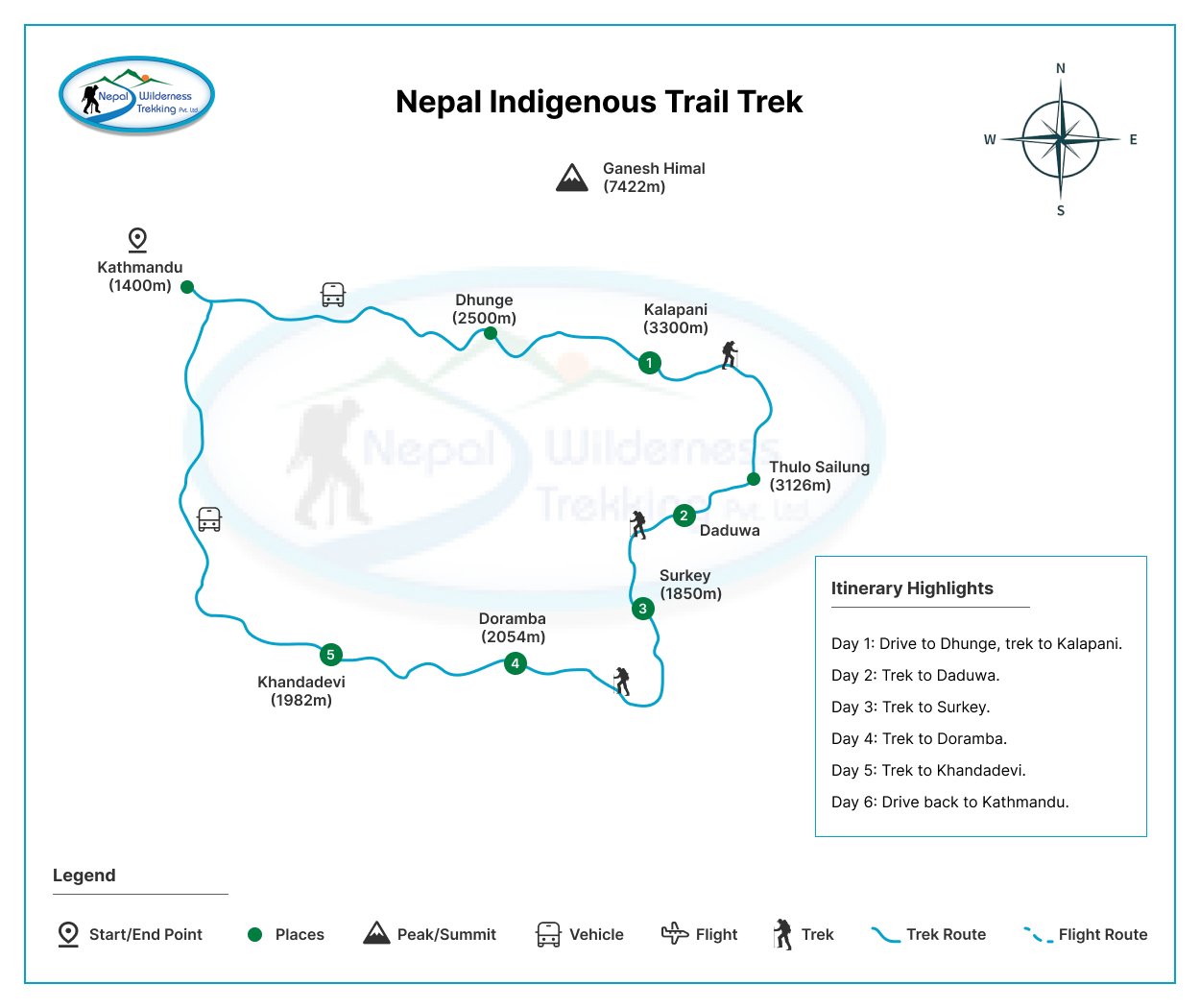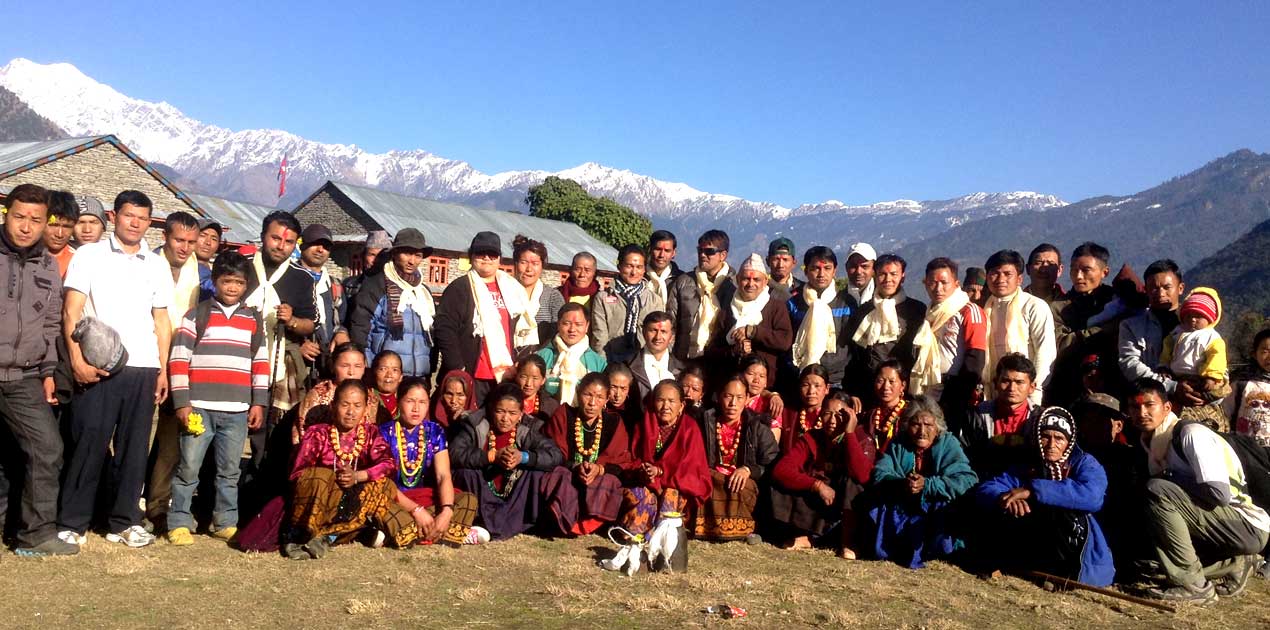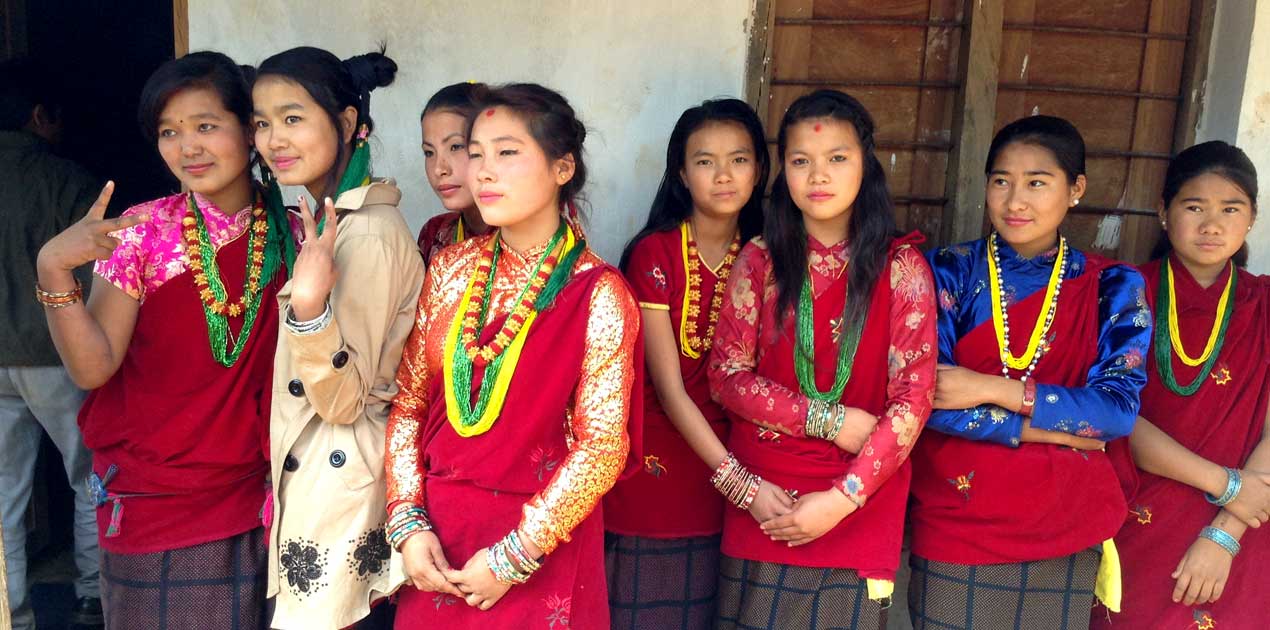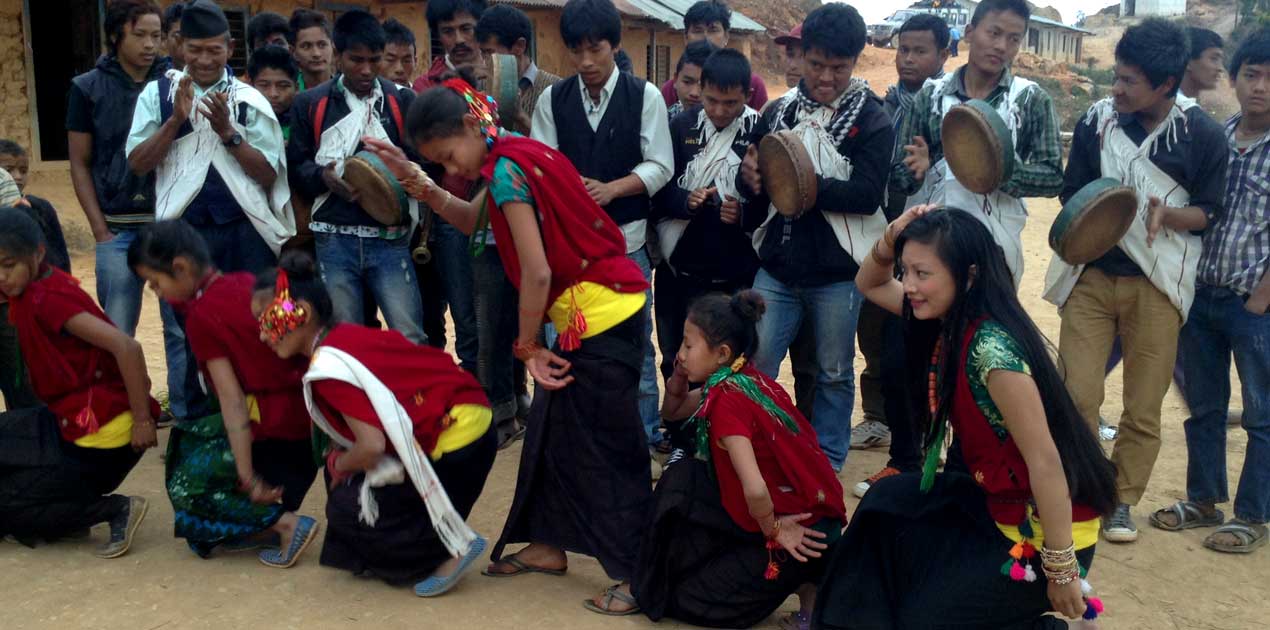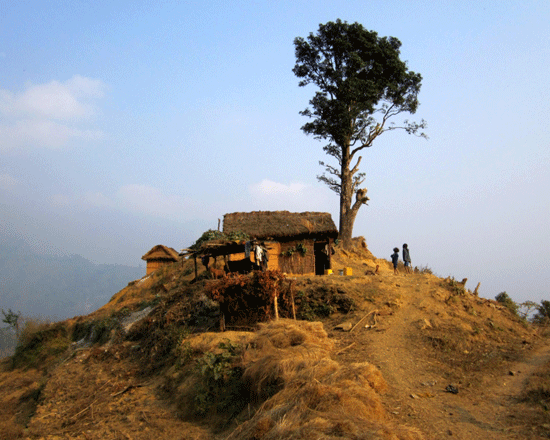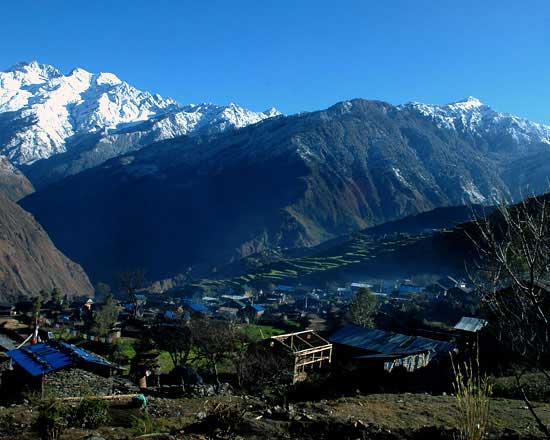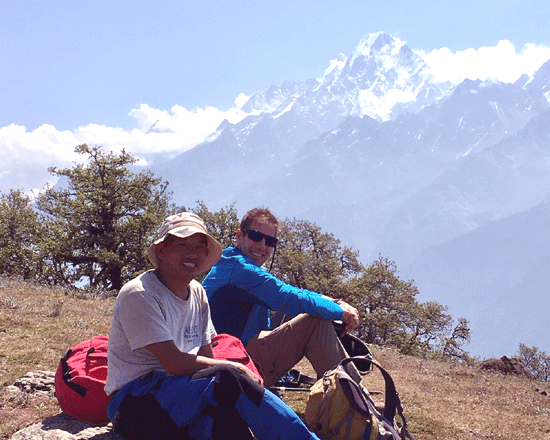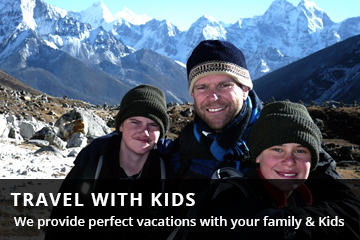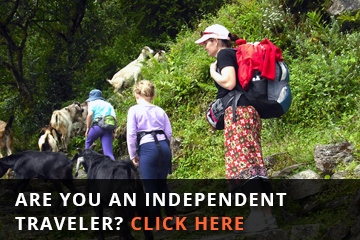Indigenous Peoples Trail Trek
Indigenous Peoples Trail Trek
Homestay TrekTrip Facts
These treks are suitable for any walker looking for something a little more challenging and energetic. They are a combination of some longer and shorter walks and hill-walking experience is desirable. The duration is usually from 10 to 15 days. Following the up and down terrain of Nepal and walking to higher elevations contrasts these treks to those in the easy classification. However, you will be rewarded for your efforts with spectacular close-up views of glaciers and of the high Himalayas. Although the terrain is not difficult, some vigorous hiking experience is useful. There may be up to 6 hours a day on the trail and the elevation rises and falls from 800m/ 2624ft to 4000m/13210ft above sea level.
100%
Overview
Nepal Indigenous Peoples Trail Trek Multi-Cultures
The Indigenous Peoples Trail trek allows you to immerse yourself in the vibrant culture of Nepal (Adivasi Janajati Trek) as you traverse through remote villages. This trek showcases Indigenous multiculturalism in a hidden part of Nepal, providing a glimpse into the authentic and typical village life.
Meandering through the picturesque mid-hills of Nepal, the Indigenous Peoples Trek offers a route at lower elevations than some of the more famous treks. Its accessibility makes it an excellent option even in the winter season. This trek follows a trail indigenous to the lowland elevations, staying below 3,126 meters. Situated in the hilly eastern part of the country, the route encompasses the Thulo Sailung Peak to the North, the Sun Koshi to the South, and the Tama Koshi River flowing alongside the hills.
For trekkers interested in other off-the-beaten-path cultural adventures, the Tamang Heritage Trek in the Langtang region also offers deep cultural immersion through Tamang villages, hot springs, and Himalayan landscapes.
Indigenous Castes
We have designed the Indigenous Peoples Trail Trek as a unique itinerary that provides an exceptional combination of cultural, linguistic, and Nepalese ethnic groups. This makes the trek a truly unique experience. Also, the tour offers an incomparable and natural blend of these diverse ethnic groups: the Bhutia, Lhopa, Thudam, Larke, Tangbe, Newar, Hyolmo, Jirel, Rai, Limbu, Ghale, Gurung, Magar, Thami, Chhantyal, Yakkha.
Indigenous people maintain distinct cultures, languages, and belief systems. Many indigenous and minority communities live in the mountains, spread across 27 of the 75 districts. Most indigenous people in this region reside in remote mountainous villages and depend on agriculture for their livelihood.
If you’re fascinated by the Indigenous Peoples’ Himalayan cultures, you may also enjoy the Langtang Valley Trek, which takes you into Tamang and Hyolmo settlements with dramatic mountain views.
Main Religion
The indigenous people along the Nepal trail are predominantly practitioners of the BonPo religion, a form of Buddhism with historical ties to Tibet. They hold a deep reverence for nature and worship it passionately. Their belief system encompasses a rich pantheon of gods and goddesses. Temples, stupas, and monasteries adorn their villages, reflecting their spiritual devotion.
Furthermore, during the Indigenous Trail Trek, you can also learn more about the Indigenous Peoples of Nepal and the real Nepalese lifestyle by taking part in this journey. This area has a spectacular Himalayan panoramic view of the entire range, from Dhaulagiri and Annapurna to Numburchuili, Gaurishanker, and Kanchenjunga in the east.
For travelers short on time who still want to witness Himalayan beauty and culture, the Best Short Trek in Nepal section highlights treks that fit into tight schedules without compromising on experience.
During the 6-day Indigenous Peoples Trail Trek
During your Indigenous Peoples Trail trek, you will stay overnight in private homes within traditional villages, far from any commercialized tourist routes. The locals will warmly welcome you, making you feel like a part of Nepalese family traditions.
Starting the Nepal Indigenous Peoples Trail Trek
The Nepal Indigenous Peoples Trail Trek starts by driving to Dhunge for 6 hours by bus and then trekking to Kalapani on the first day. Next, you will visit Thulo Sailung, which stands at 3,126 meters. Subsequently, you will trek to Daduwa homestay, a beautiful village on the Indigenous Peoples Trail. Additionally, you will encounter the great villages of Indigenous Peoples inhabiting Surkey and Doramba. On the final day, you will overnight at the Khandadevi homestay, visit the Khandadevi temples, and then drive back to Kathmandu.
For trekkers interested in high-altitude yet remote sacred destinations, the serene Dudh Kunda Trek offers stunning views of Numbur Himal and a sacred glacial lake revered by both Hindus and Buddhists.
Cultural Heritage and Religious Beliefs
The Indigenous Peoples Trail is a journey through Nepal’s rich cultural heritage. Firstly, you’ll visit ancient temples, stupas, and monasteries that are integral to the local belief systems. Moreover, the BonPo religion and Buddhism are prominent in this region, adding depth to the cultural experience. Additionally, the religious structures you encounter are testaments to the spiritual lives of the indigenous communities.
For a deeper look at Nepal’s spiritual architecture and rituals, a visit to Pashupatinath Temple in Kathmandu before or after your trek adds historical and religious context to your journey.
Temples and Monasteries
Among the notable religious sites are the Khandadevi temples and monasteries that dot the trail. These sacred places offer insight into the religious practices and architectural styles of the local people. The Khandadevi homestay experience is particularly memorable, providing trekkers with a chance to live with local families and participate in their daily rituals.
The Best Time for the Nepal Indigenous Trek
Spring (March to June):
Spring provides clear skies, blooming flowers, and moderate temperatures, making it an ideal season for trekking.
Autumn (September to December):
Autumn offers clear skies, mild temperatures, and breathtaking views of the Himalayas.
During both seasons, you can fully appreciate the natural beauty of the trail and immerse yourself in the rich culture and traditions of Nepal’s indigenous communities.
Highlights
- The Indigenous Peoples Trail trek stands out as a highlighted experience, spotlighting Nepal’s diverse and rich cultural heritage.
- This trek leads you through remote villages, showcasing Indigenous multiculturalism in an off-the-beaten-path region of Nepal.
- The Indigenous Peoples Trail trek offers an immersive and authentic encounter with typical village life.
- It is noteworthy that this Indigenous village trek is the most significant example of Indigenous multiculturalism in a remote part of Nepal.
Note
At Nepal Wilderness Trekking, our expert team of guides brings over 20 years of hands-on experience leading treks along the stunning Indigenous Peoples Trail. With deep-rooted knowledge of the region’s terrain, culture, and communities, our dedicated guides and porters ensure your journey is not only safe but deeply enriching.
Let the breathtaking photos speak to the trail’s beauty—and let us guide you through it with heart, experience, and care.
What Do You Learn from Them?
There is much to learn from the indigenous peoples of Nepal, as their diverse cultures and traditions offer valuable insights into sustainable living, community, and resilience.
- Harmony with Nature
- Community and Cooperation
- Cultural Heritage and Identity
- Resilience and Adaptability
- Oral Traditions and Storytelling
- Spiritual Connection
- Art and Craftsmanship
Detail Itinerary
- Day 01: Drive from Kathmandu to Dhunge (2,100m) – Trek to Kalapani (3,300m). Your adventure begins with a scenic drive from Kathmandu’s Old Bus Park or Koteshwor (Kanda Ghari) Bus Station. The 6-hour journey travels through rolling hills, remote hamlets, and forested ridges as you make your way to Dhunge. From there, begin a 2-hour uphill hike to the peaceful village of Kalapani, nestled beneath the spiritual ridge of Sailung.
Overnight: Homestay in Kalapani - Day 02: Hike to Thulo Sailung (3,146m) – Trek to Daduwa (2,200m). Wake up early for a short hike to Thulo Sailung viewpoint, where you’ll be rewarded with a sweeping panorama of Himalayan giants like Everest, Langtang, Gauri Shankar, and Dorje Lakpa. This area is sacred to both Hindus and Buddhists, with chortens and shrines scattered across the windy ridgeline. After exploring, trek downhill through forests and pastures to the quiet village of Daduwa.
Overnight: Homestay in Daduwa - Day 03: Trek from Daduwa to Surkey (1,850m). Continue your descent through serene forests and cultivated terraces, passing traditional homes and meeting friendly locals. The trail crosses streams and winding ridges as you journey toward Surkey. This peaceful village offers beautiful mountain views and a chance to learn about daily life in rural Nepal.
Overnight: Homestay in Surkey - Day 04: Trek from Surkey to Doramba (2,054m). Today’s walk is filled with cultural richness as you pass through Tamang and Magar communities surrounded by pine forests and scenic hilltops. Doramba is a vibrant village with strong ethnic traditions and beautiful natural surroundings, providing a perfect setting to enjoy traditional cuisine and warm hospitality.
Overnight: Homestay in Doramba - Day 05: Trek from Doramba to Galba – Khandadevi (1,982m). Trek to the sacred site of Khandadevi Temple, perched on a ridgetop with spectacular views of the surrounding valleys and mountains. This day offers a mix of forest trails and panoramic ridgelines, rich in local legends and spiritual energy. The final evening of your trek is spent in the quiet village of Galba or Khandadevi.
Overnight: Homestay in Khandadevi - Day 06: Drive Back to Kathmandu via Dhulikhel. After breakfast, board a local jeep or private vehicle and begin your return journey to Kathmandu. The scenic 4 to 5-hour drive passes through Dhulikhel and Banepa, arriving back in the city by afternoon. Drop-off is available at Koteshwor Bus Station or Ratna Park (Old Bus Park).
Cost Included
- Italian, Chinese, Nepali, Indian, and other European foods are available three times a day (breakfast, lunch, and dinner).
- Accommodation in tea houses according to the itinerary.
- Kitbag for storing your belongings.
- Sleeping bag for a comfortable night's sleep on a trek in minus-25 degrees.
- TIMS Entrance Permit.
- Experienced English-speaking, Government licensed holder, trekking guide.
- Experienced Sherpa helpers (porters), 1 porter for every 2 pax.
- Guide, and Porter meals, accommodation, salary, and insurance.
- Necessary paperwork, all government, and local taxes.
- A certificate of appreciation from Nepal Wilderness Trekking after a successful trek.
- Both-way local transportation, Kathmandu Trekking starting point, and Trekking ending point.
- 3-time meals a day (breakfast, lunch, and dinner chosen from the menu).
- Accommodation during the trek.
- Guide and porters, Food, accommodation, salary, insurance, equipment, and medicine.
- All the formal charges and 13% Government VAT.
Cost Excluded
- Hotel in Kathmandu
- Personal equipment
- all beverages, Soft and hard table drinks such as Coke, beer,
- drinking water/mineral water, etc., during the trek.
- dessert, etc
- Hot shower, laundry
- personal insurance
- Tip for the guide and porter.
- Excluded are all costs and expenses not listed under "Cost Includes."
- any costs or delays beyond the control of the management, such as those due to landslides, weather conditions, itinerary modifications for safety reasons, or illness. Changes in government policies, strikes, and similar factors are not included.
Trip Map
